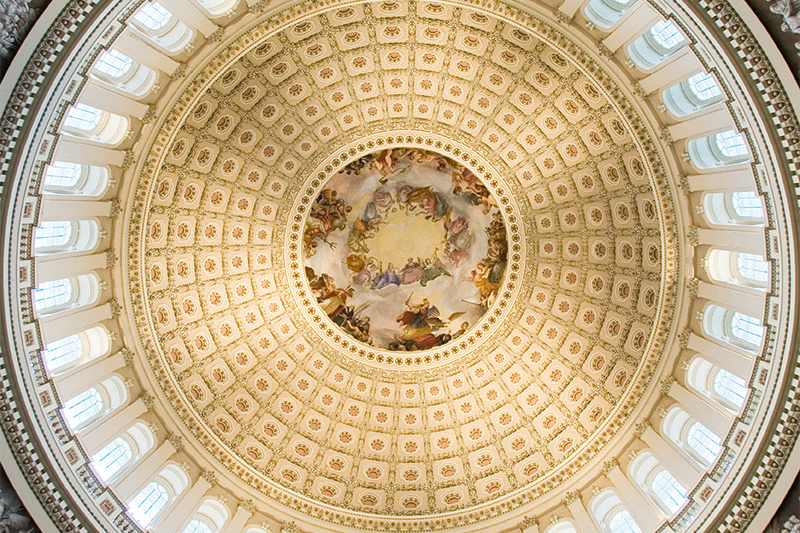US M&A hits record highs
The US enjoyed record levels of M&A activity in H1 2021, as dealmakers made up for lost time caused by pandemic-related disruptions

US M&A surged to record levels in the face of pandemic-related challenges and potentially dramatic regulatory shifts
We are just heading into August, but it is already safe to say that 2021 is a historic year for US M&A. Deal value rose to a new high of US$1.27 trillion in H1 2021. This was a 324 percent increase compared to H1 2020—and was virtually equivalent to the total value recorded in all of 2020.
This torrent of deals was the result of a perfect storm of activity on the part of strategic, PE and SPAC dealmakers. The pandemic drove many corporates to offload non-core divisions and acquire digital capabilities. Corporates that thrived during the pandemic used M&A to consolidate gains. PE firms strove to deploy their massive troves of dry powder. And SPACs searched for opportunities to invest the record levels of funds they raised.
The election of Joe Biden as President significantly reduced political uncertainty that may have dampened activity in 2020 and this spurred dealmaking in 2021. However, the administration's policies could also complicate dealmaking.
The Biden Administration is taking vigorous steps to reshape antitrust policies and practices in the US. In July, the President issued an Executive Order to promote competition and lower prices throughout the economy through increased antitrust enforcement. These efforts are likely to intensify during the run-up to the US midterm elections in November 2022. The effects were already visible in the recent decision by Aon and Willis Towers Watson to call off their merger, which they first announced in March 2020. The deal would have created the world's largest insurance broker, but the Department of Justice opposed the deal on the grounds that it would eliminate competition, reduce innovation and lead to higher prices.
CFIUS has shown that it will mostly continue with the more aggressive approach to evaluating deals for national security concerns that was established by the previous administration. And with the appointment of Gary Gensler as Chair of the Securities and Exchange Commission, the administration signaled it will take a more aggressive approach to securities law enforcement.
There are a number of other looming risks as well. The possibility of rising inflation and the end of government support measures related to the pandemic could shock the market. And dealmakers are concerned about potentially frothy valuations.
But perhaps the greatest variable remains the uncertain trajectory of the pandemic. Though the US was on a course of increasing optimism as vaccines were rolled out, recent concerns about the Delta variant of COVID-19 have raised questions—and exacerbated political divisions—about how quickly economies should open up.
Despite these challenges, the outlook for dealmaking remains very positive. US GDP forecasts are upbeat, stock markets are at historic highs, and interests remain low. Moreover, the Biden Administration's economic stimulus efforts and ambitious plans for energy transition and infrastructure development will inject large sums of capital into the economy. We expect US M&A to remain very active in the second half of 2021.
The US enjoyed record levels of M&A activity in H1 2021, as dealmakers made up for lost time caused by pandemic-related disruptions

US private equity has rallied following pandemic lockdowns, thanks to adaptations to remote deal processes and record dry powder

TMT M&A tops the sector charts again

After a year of volatility, the oil & gas industry has stabilized and M&A activity has resumed

Technology M&A activity is thriving in 2021 as dealmakers continue to turn to the sector in search of assets with high-quality earnings and growth prospects

The value of healthcare M&A in H1 surpassed pre-pandemic levels

Deals in the consumer and retail sector show signs of recovery as consumer spending
rallies post-pandemic

The power and renewables industry is positioned for a sustained period of strong deal
activity as the US focuses on hitting net zero carbon emissions by 2050

M&A value among real estate firms quadrupled year-on-year in H1, after a tough 2020

After a pause, investment in infrastructure has ballooned, even before the Biden administration's US$1 trillion-plus plan is passed

After campaigning for the presidency on a platform that included more aggressive antitrust enforcement, Joe Biden has taken early steps to honor those pledges

President Joe Biden's approach to the national security risks posed by foreignbacked M&A may differ in style from his predecessor, but not in substance

Even as economies pick up, dealmakers have maintained focus on managing the risk of broken deals

New Securities and Exchange Commission Chair Gary Gensler has put scrutiny of
SPACs and private funds at the top of his agenda

In the first half of 2021, Delaware courts issued several decisions affecting M&A dealmaking

After a turbulent 18 months which saw M&A crash before an impressive return to form, H2 2021 is set for continued strong deal activity, as well as new challenges


Even as economies pick up, dealmakers have maintained focus on managing the risk of broken deals
Stay current on global M&A activity
Explore the data
Reverse break-up fees are the result of negotiations. Some buyers may be more inclined than others to agree to pay such fees if, for example, there is regulatory approval required for the merger. Payment of a breakup fee, however, depends on the facts and circumstances of each deal.
Lockdowns in 2020 brought a large uptick in terminated deals—and although broken deal rates have slowed, there has been a renewed focus from deal parties on how to protect themselves in the event of a deal termination.
There were more than 100 deal terminations recorded globally in Q2 2020, the highest quarterly total since 2018, according to Bloomberg Law. High-profile deals that were called off as a result of the pandemic included Ally Financial canceling its US$2.65 billion acquisition of CardWorks after a mutual agreement and real estate mall investor Simon Property Group initially abandoning plans to buy Taubman Centers for US$3.6 billion before agreeing to go ahead after agreeing a lower valuation.
Levels have since stabilized to 70 terminated deals in Q1 2021, but dealmakers continue to monitor broken deal risk closely.
Parties are moving to protect themselves from deal termination risk by negotiating for clear termination fee provisions in merger agreements. The inclusion of reverse break-up fees, which were relatively rare pre-pandemic, has become more common.
Reverse break-up fees are the result of negotiations. Some buyers may be more inclined than others to agree to pay such fees if, for example, there is regulatory approval required for the merger. Payment of a break-up fee, however, depends on the facts and circumstances of each deal.
White & Case, for example, advised healthcare and insurance provider Anthem following its terminated deal with Cigna. Cigna claimed that it was automatically entitled to a US$1.85 billion reverse break-up fee if the merger failed to obtain regulatory approval, unless Cigna caused the failure. But the Delaware Chancery Court and Delaware Supreme Court determined that Anthem was not obligated to pay the reverse break-up fee because Anthem terminated based on Cigna's breaches and did not have to prove Cigna caused the merger's failure.
The pandemic did not, however, trigger the anticipated deluge of broken deal litigation over the triggering of material adverse change (MAC) and material adverse effect (MAE) clauses. Although parties did pay close attention to whether MAE and MAC clauses were triggered in the market uncertainty following the first lockdown and whether there was cause of litigation, a desire to consummate transactions fast seemed to prevail in most cases.
SPACs and private equity firms with large sums of dry powder and demanding deployment schedules have pushed for deals to close, rather than pulling out of transactions as many expected.
But there could still be an unexpected flow of lawsuits alleging sponsor or director conflicts of interest and inadequate due diligence if any of these deals fail to deliver to expectations.
White & Case means the international legal practice comprising White & Case LLP, a New York State registered limited liability partnership, White & Case LLP, a limited liability partnership incorporated under English law and all other affiliated partnerships, companies and entities.
This article is prepared for the general information of interested persons. It is not, and does not attempt to be, comprehensive in nature. Due to the general nature of its content, it should not be regarded as legal advice.
© 2021 White & Case LLP